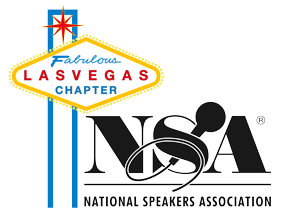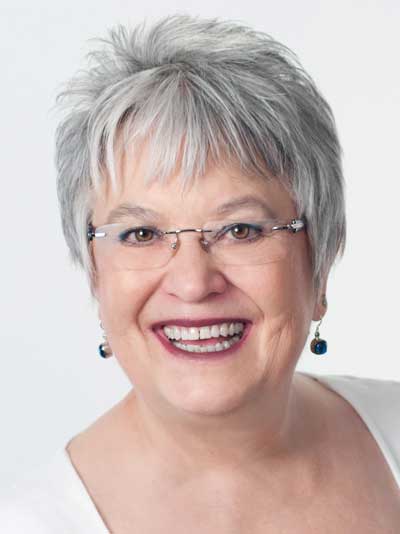October 2021 Event Rundown
I’m subbing for Chrystina Katz this month, and, okay, my notes will not be as in-depth as Chrystina’s. However, I hope they will give you an idea of what you missed by not being at the meeting in person. ED TATE, CSP and JENNIFER LIER We began with our own Ed Tate, CSP, for the CSP Accelerator part of the meeting. Ed presented on “How to Pitch to Win.” He brought Jennifer Lier, LV-based Speaker Specialist, Conference Strategist and Entertainment Consultant, to coach us after he gave his presentation. Ed began with the basics.
- Your pitch needs to be about the audience, not about you.
- What will their lives look like after they work with you?
- How will their circumstances change?
Ed urged us to avoid titles, jargon, stories, long sentences, and cute and clever, but not clear, descriptions of what we do. Your verbal business card describes what you do in one sentence.
- Who plus Action equals We coach … We help …”
- Share #1 Result they get — the problem you solve.
- No titles, jargon, or industry-insider language (Engineer, Speaker, etc.)
- Arouse curiosity & amp-up FOMO factor.
After we practiced our verbal business cards, Ed invited Jennifer Lier, Las Vegas-based Speakers Bureau Professional, to the front of the room. We were then invited to give our “pitch.” Those brave (and smart) enough to volunteer received insightful and constructive input on how to improve our descriptions of what we offer. DAN CLARK We then welcomed Dan Clark who presented on “The Art and Science of Story Telling.” In order to get people to remember what you’re teaching, you must anchor it with a story. Make your point, then follow it up with a story that shows how to apply it in your life.
- Ask a question.
- Make your point.
- Illustrate by asking another provocative question.
- Illustrate it with a story.
Make every story funny, provocative, and emotional. It’s essential to take care of the left brain and right brain learners. Your story engages trust from your audience. It must instill belief, expectation, behavior. Ask the right questions. When you ask the “Why?” the “How” will unfold. There are three questions we must answer when you speak to an audience.
- Why should I listen to you? (credibility piece) This is where your introduction is so important.
- Can I do it too? (possibility piece) Audience members need to leave believing they can do what you did…if they do the work.
- How do I do it? What’s the system? What’s the formula?
When presenting, address the 3 M’s. Message – if you have one hour to live, what would you say? Market – who will benefit from your message? Marketing – where do they meet? You need to start thinking like a song writer. What sells the song is the hook – the chorus. A successful “song” has passion, creativity, and imagination. The most frequently asked topics for speakers are: Motivation (external process), Inspiration (internal process), Change, Leadership, Management, and Team building Make a list of people who are experts in each of these categories and ask them their best practices and their stories. Interview them to find out what are their top concerns and desires. What are they passionate about? How do you connect with these experts? Find out what they’re passionate about and connect on their own playing fields. As you build your own presentations, practice spontaneity. Have stories in your repertoire that will take people on an emotional roller coaster ride. Keep a “good idea book” and develop and write your own stories. Call forth passion, creativity, and imagination. There are three sources of stories.
- Life – discovery process about your life experiences. Where did you grow up? What was it like to break your heart? Etc.
- Transitional experiences – when you go from elementary to middle school to high school, when you moved to a new home/community, when you changed jobs, when you got divorced, etc.
- S.E.E. (Significant Emotional Events) – how you thought and acted before an event and how you acted after because of the event. These are what mold us into the people we are today.
Then go retro and ask, “What lessons did I learn?” Remember to address left and right brain learners. In customizing your speech, ask of the event planner…
1. Theme
- What is the published theme?
- What does it mean to you?
- What was last year’s theme?
2. Purpose
- Is it networking, sales event, education?
- What do they do when they wake up? What do they sell? – memorize it.
- What is your desired message?
- Think about the stories you can tell to support it?
- What jokes or quotes can you bring up?
3. Attendees
- Find out the demographics, needs, and desires of your audience.
4. Message
- What is the message you want the participants to go away with?
Look at your notes from the conversation with the event planner. There are eight elements you need in every presentation/talk:
- Outside introduction – write and give to whoever is introducing you. Note at top of your introduction, “Please read as written.” Make it at least 14 pt font. Keep it to three paragraphs. Answer the question, “Why they should listen to me?” and customize your presentation to the audience.
- Inside introduction – Look as you want to be received. Connect with audience. Integrate in the first part of your presentation. Make it personal. Customize to your audience. Transference of trust. Bring in humor.
- Thesis – Build your credibility without spelling out the nitty gritty of what you’re talking about. Tell them, “I’m here to help you ……, and “Today you’ll learn about …..”
- Structure – Keep the right and left-brain speakers engaged. Use acronyms rather than “7 points” if you have a lot of points to make.
- Social proof – Share one story to illustrate each point.
- Offer data that supports your points. You just need two very provocative, profound sets of data.
- Use visual aids – If you’re talking about story selling, don’t use slides. Use no more than 12 slides in a 60-minute presentation with a black slide in between slides so you can reconnect the eye-to-eye connection.
- Call to action – You have to take them from where they are to where they want them to be. Give your audience a clear, “Call to Action.”
There’s more, but this will give you an idea of what was covered at our October meeting. If you’re an NSA-Las Vegas member, you have access to the recording to the October 9th meeting.
Respectfully Submitted,
Sophia Falke

